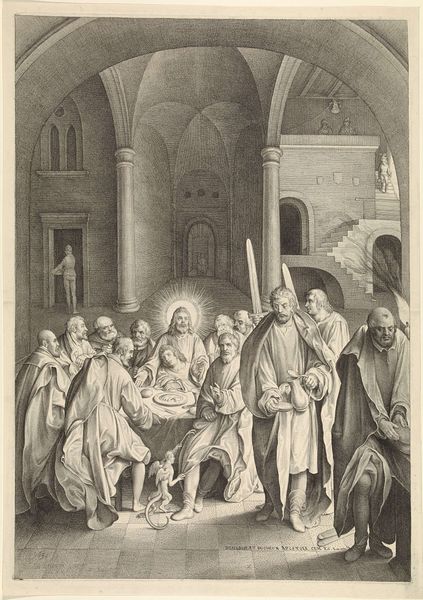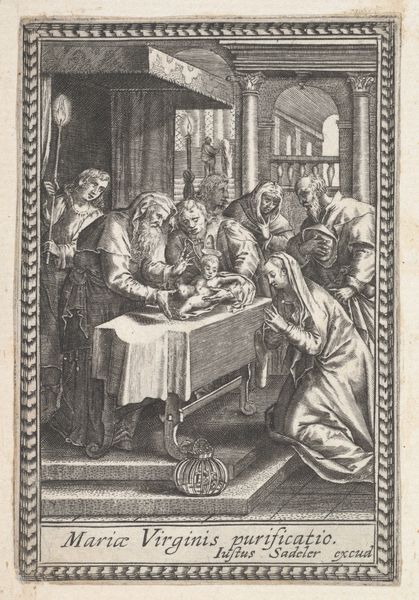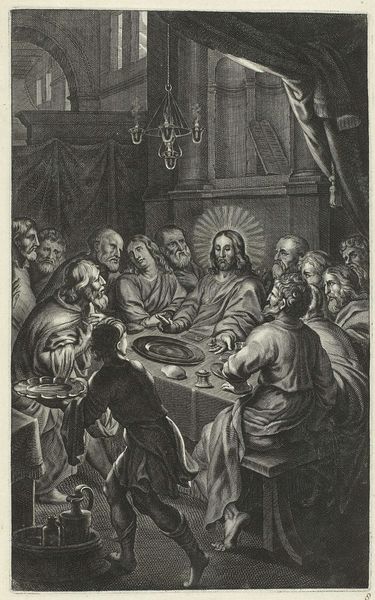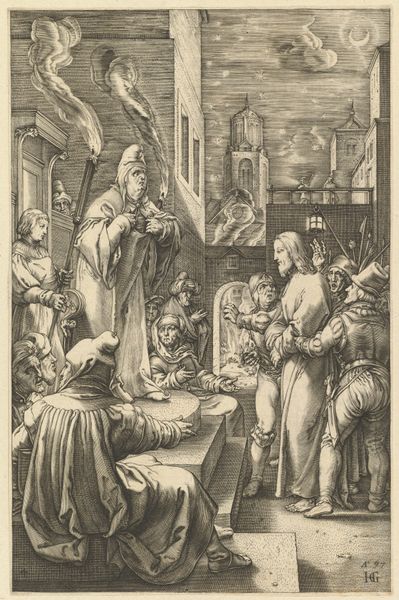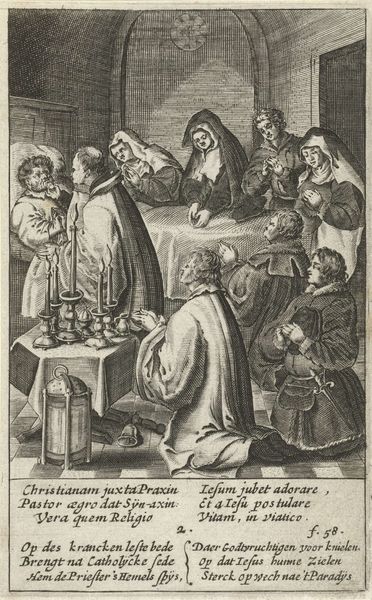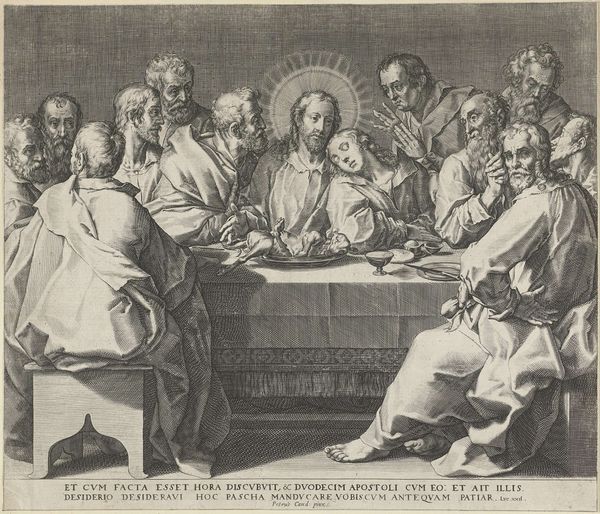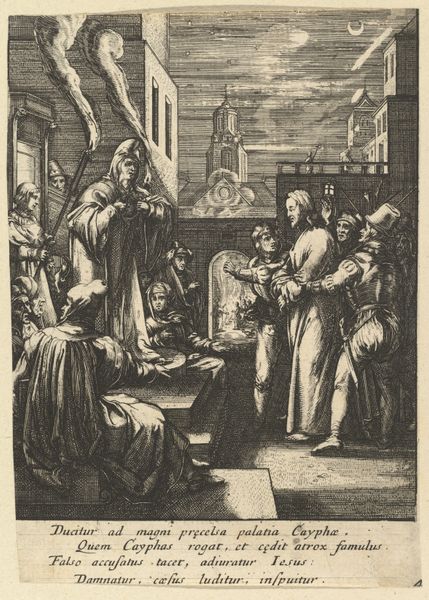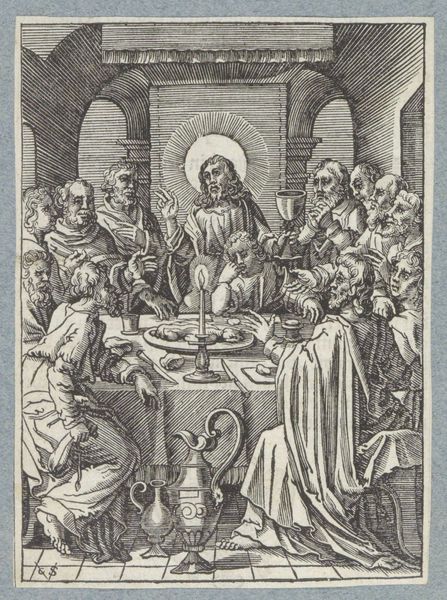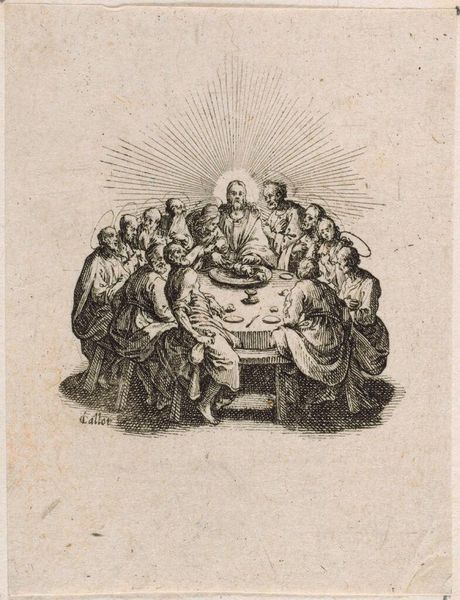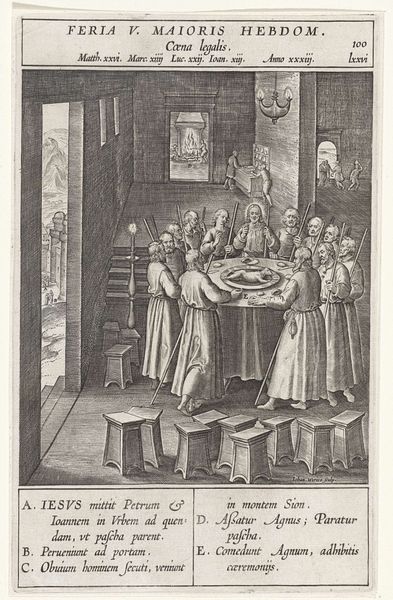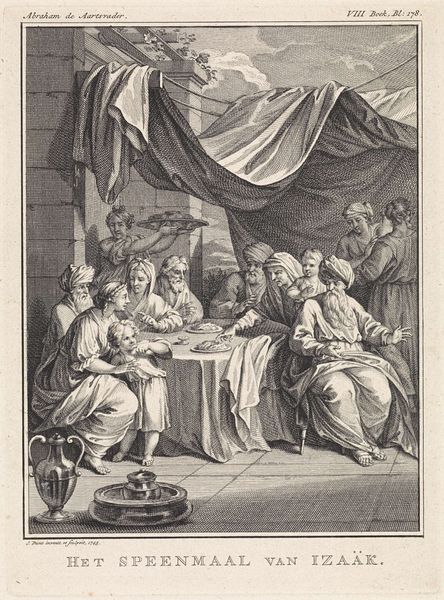
print, engraving
#
narrative-art
# print
#
perspective
#
figuration
#
group-portraits
#
line
#
history-painting
#
northern-renaissance
#
engraving
Dimensions: height 196 mm, width 137 mm
Copyright: Rijks Museum: Open Domain
Curator: Let's turn our attention to Nicolaes de Bruyn's "Laatste Avondmaal," or "The Last Supper," an engraving from 1618 currently residing at the Rijksmuseum. Editor: The mood is instantly heavy, don't you think? There’s a distinct tension created by the almost theatrical use of perspective and the figures clustered so closely. Curator: Precisely. De Bruyn utilizes the graphic power of line to compress the emotional weight of the scene into a highly structured composition. Consider how the lines converge, guiding your eye directly to Christ. Editor: It’s hard not to. But looking beyond the immediate religious narrative, I’m struck by how the piece encapsulates the social anxieties of its time. This gathering, so pivotal, feels shadowed by betrayal. Even the lighting contributes—aren't the faces rendered in ways that hint at conflict, suggesting the fissures within the group dynamic? Curator: I understand your point. Certainly, elements like the somewhat austere interior add to a reading beyond purely devotional content. Note the attention to detail, though: the textures rendered through varied engraving techniques, adding visual richness and hierarchical significance to the primary figures in the composition. Editor: Those subtle yet critical gradations in texture do underscore the implicit hierarchy and relationships of power among those present. Isn’t that what makes the work endure, its ability to reveal those enduring and timeless conflicts between faith and betrayal, inclusion and exclusion? It's a complex statement on community and power. Curator: De Bruyn was adept at distilling complex theological narratives into a concise visual form. The engraving stands not only as a testament to the skill of Northern Renaissance printmakers but as a compelling formal and thematic rendering of an iconic moment. Editor: And, arguably, how the themes it presents still resonate profoundly within contemporary society. It is a complex, if familiar, reminder of the shadows that lie beneath seemingly tranquil surfaces.
Comments
No comments
Be the first to comment and join the conversation on the ultimate creative platform.

